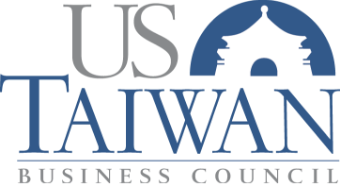Commentary:
Signing of an LOA to Upgrade Taiwan’s F-16 A/B Fighters
(Arlington, Virginia, July 18, 2012)
Commentary by Rupert Hammond-Chambers
The US-Taiwan Business Council congratulates the governments of the United States and Taiwan on their recent signing of a US$3.8 billion Letter of Offer & Acceptance (LOA) to upgrade Taiwan’s 145 F-16 A/B fighters. This deal will provide Taiwan’s existing fleet of F-16 A/Bs with important enhancements by means of a contract spanning nearly a decade of work (2012-2021). The agreement provides for Taiwan adding advanced Active Electronically Scanned Array (AESA) radar to its fighters, as well as for making structural upgrades, improving avionics, and expanding electronic warfare suites.
The future boost in Taiwan’s airpower capabilities represented by this LOA was a long time in coming. It would not have happened without the leadership of Senator John Cornyn. As a result of the Senator’s perseverance, the Obama Administration notified to Congress a US$5.3 billion F-16 A/B upgrade program in September 2011. In the absence of Senator Cornyn’s personal attention to this important Asia Pacific security matter, it is likely that the upgrade program LOA would not have been consummated last Friday, July 13, 2012.
Despite this positive development, however, Taiwan’s very real and urgent requirement for additional fighters remains unaddressed.
Taiwan & the U.S. Re-Balance Towards Asia
The Obama Administration is currently paying increased attention to the Asia Pacific region, and has undertaken a significant effort to highlight its “Pivot to Asia” and its re-balancing of priorities. This is welcome news.
In the context of this re-balancing effort, moving ahead with the F-16 A/B upgrade program is an important initial step in Taiwan’s effort to play its role in the region. However, Taiwan’s requirement to also purchase new fighters is just as serious and urgent as the U.S.-supported modernization programs for Australia, Singapore, South Korea, and Japan.
It is important to clearly understand the grave issues faced by Taiwan’s air forces after 2016. In the latter part of that year, the Taiwan Air Force will start to withdraw up to a squadron (24) at a time of F-16 A/Bs to undergo upgrades and modernization. With 16 fighters permanently allocated for training at Luke Air Force Base, and with an operational rate of 70%, Taiwan will then have as few as 73 F-16 A/Bs operational at any one time – half of its existing fleet. In addition, these remaining fighters will not yet have been modernized, and will be required to fly more missions to attempt to maintain control over Taiwan’s myriad defense and security scenarios. This is simply not enough to handle all of Taiwan’s many needs, whether at war or while at peace.
What is the Plan to Fill Taiwan’s 2016-2021 Fighter Gap?
In an April 27, 2012 letter to Senator Cornyn, the White House stated that it is “mindful of and share your concerns about Taiwan’s growing shortfall in fighter aircraft.” The letter also noted that the Obama Administration is deciding “on a near term course of action on how to address Taiwan’s fighter gap, including through the sale to Taiwan of an undetermined number of new US-made fighter aircraft.”
This important language should be at the center of the next stage of Taiwan’s air force modernization. Neither the U.S. nor Taiwan has the luxury to take several years to determine what to do next. The two governments need to settle on a plan in the coming months, a plan that can be implemented so that while Taiwan’s F-16 A/Bs are being withdrawn from the front line in 2016 and beyond, new fighters are available to fill the gap. This plan could be as simple as a phased approval approach. Phase I could be for a small number of new F-16s (24) to compensate for those existing aircraft out of service during the upgrade program. These new aircraft could be delivered in parallel with the upgrade/modification schedule.
There are some who argue that the F-35B – the short take-off and vertical landing (STOVL) variant of the new U.S. fighter – should be the focus of Taiwan efforts to modernize its fighter fleet. In 2011, press reports indicated that a U.S. Department of Defense report to Congress highlighted a STOVL aircraft as the best solution for Taiwan.
Certainly a STOVL variant would meet many of Taiwan’s needs, and if it was available that could be an attractive option. However, the F-35B will certainly not be made available to Taiwan in the next decade. It therefore fails to meet Taiwan’s fighter gap needs between 2016 and 2021. In addition, the F-35B is significantly more expensive than the F-16 C/D – it represents a new airframe and therefore a new supply chain to keep it operational through training, upgrading, and maintenance. The F-35B would therefore create even greater budgetary pressures for Taiwan’s already under-funded defense establishment.
The US-Taiwan Business Council welcomes the signing of the F-16 A/B upgrade and modernization contract this past Friday. Nevertheless, this action does not offer a complete solution. Indeed, removing F-16 A/Bs from the front line to be upgraded actually makes Taiwan’s 2016-2021 fighter gap that much wider. Taiwan will not have enough fighters to patrol its skies.
The Council urges the U.S. & Taiwan governments to put a plan in place as soon as possible to address this destabilizing shortfall.
